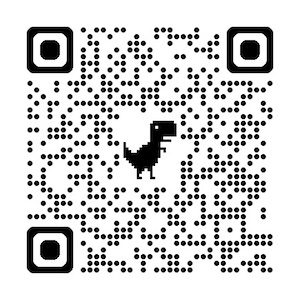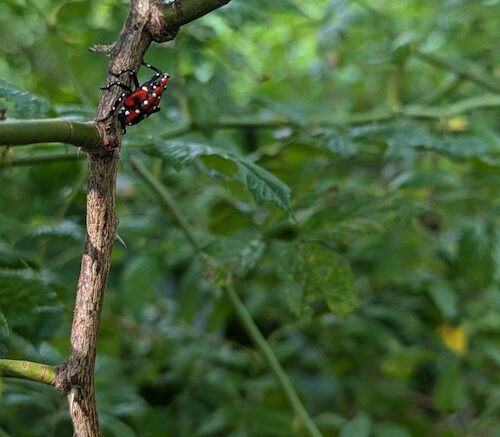By Christopher Audette, Waterman Conservation Education Center director —
On Wednesday, July 24, 2024, staff from the Waterman Conservation Education Center reported the presence of Spotted Lanternfly at the Brick Pond in the Village of Owego to the New York State Department of Agriculture and Markets.
The Spotted Lanternfly is an invasive insect that feeds on over 70 plant species, many of which are economically or ecologically important to New York State.
A weak flier, the Spotted Lanternfly is primarily spread by human activity. Spotted Lanternflies lay their eggs on the walls and undersides of railway cars and truck beds, or directly on products like firewood, outdoor furniture, and stone. The eggs then hatch elsewhere, establishing new infestations.
Once established, spotted lanternfly populations usually grow rapidly; they have already caused extensive economic damage in Pennsylvania. Uncontrolled by predators, the insect’s population can reach large enough numbers to cause substantial damage to important crops like apples, grapes and hops, as well as to many native and ornamental trees.

Scan this QR code to visit the NYS Agriculture and Markets website to learn more about the Spotted Lanternfly and what can be done.
A second important impact of the insect’s infestation arises from the large amounts of excretions (called “honeydew”) produced by the congregations of Spotted Lanternflies. “Honeydew” accumulates on the ground and coats buildings, trees, vehicles, and anything else present near the insects. The sugar-rich honeydew attracts other insects and promotes the growth of sooty mold, which can build up and be difficult to remove, impacting tourism in some cases.
The Waterman Center has contacted the NYS Department of Agriculture and Markets, the NYS Department of Environmental Conservation (DEC), and the Finger Lakes Partnership for Regional Invasive Species Management (FL PRISM). The Waterman Center will assist with these entities’ planned actions and interventions for both monitoring and control of the Spotted Lanternfly.
In the meantime, the Waterman Center invites the community to learn more about the Spotted Lanternfly and help raise awareness about this invasive pest. We are working with the Cornell Cooperative Extension of Tioga County, the Tioga County Soil and Water Conservation District, and the Village of Owego to plan local education, outreach, and management efforts. Our education and outreach efforts will be crucial to help determine and document the current range of this invasive species’ population, assist regional agribusiness enterprises in preparing for potential impact, and mobilize the community to participate in possible control efforts at Brick Pond and throughout the Village of Owego during the fall and winter of 2024 and beyond.
Please be on the lookout for future announcements, talks, workshops, and volunteer opportunities!
If you have questions or would like more information, contact or visit The Waterman Conservation Education Center, 403 Hilton Rd., Apalachin, (607) 625-2221 or email info@watermancenter.org; Cornell Cooperative Extension of Tioga County, 343 Cass Hill Rd. in Candor, (607) 659-5694, or email to tioga@cornell.edu; and Tioga County Soil and Water Conservation District, 183 Corporate Dr., Owego, (607) 687-3553.



Be the first to comment on "Spotted Lanternfly discovered in Owego"